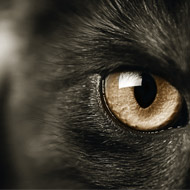
Officers conclude killings 'not carried out by a human'
The Metropolitan Police has closed its investigation into the ‘Croydon cat killer’ after concluding the cats were most likely killed by vehicle strikes and then scavenged by foxes.
The investigation was launched in 2015 following reports from the public about mutilated cats. On many occasions, the cats had been found with their heads and tails removed, in Croydon and the surrounding area.
No evidence of human involvement was found in any of the reported cases, however media reports sparked widespread concern that a ‘Croydon cat killer’ was at large.
Local charity South Norwood Animal Rescue League (SNARL) conducted 25 post-mortem examinations on cats that had been found mutilated. A veterinary pathologist found the cause of death to be blunt force trauma, such as impact from vehicles.
It was also revealed that the mutilations occurred after death, and some were believed to have been caused by a sharp implement. It was on the basis of these examinations that six cases of cat mutilation were deemed suspicious and, just last month, Scotland Yard carried out a re-examination.
During the re-examination, the same veterinary pathologist found puncture wounds not found before on some of the animals and concluded that some may have been scavenged.
In three cases where CCTV footage was obtained, the footage showed foxes carrying bodies or body parts of cats. In June 2017, a cat’s head was found in a school playground and CCTV footage showed that it had been carried in by a fox.
In April 2017, a woman in North London found a mutilated cat in her garden, checked her CCTV camera, and saw a fox carrying the cat’s head into the garden.
Furthermore, in July 2017, a woman found the body of a cat without a head or tail next to her property. On checking her CCTV, she saw that a fox had dropped the cat in the position it was found.
On Thursday (20 September), officers in Croydon met with SNARL and the RSPCA to set out the investigation’s final conclusion that there is no evidence of human involvement. It said that all of the cases of cat mutilation will be recorded as ‘no crime’.
In a statement, the Metropolitan Police said: “Following a thorough examination of the available evidence, officers working alongside experts have concluded that hundreds of reported cat mutilations in Croydon and elsewhere were not carried out by a human and are likely to be the result of predation or scavenging by wildlife.”
Responding on its Facebook page, SNARL said the announcement had come as a surprise and that it would be seeking advice as to how it can move forward.
“We consider that the evidence we have gathered over the last three years does indicate human involvement and there is expert opinion to back this up. Over the last three years, we have discounted over 1500 incidents as non-human related," it said.
In a further statement, the charity said it had taken the decision to continue with the investigation, adding: “We now have the skills within our extended team to cover most of what police would be doing anyway.”



 The RCVS has announced a new version of its 1CPD mobile app, with enhanced features for veterinary surgeons and veterinary nurses to record their continuing professional development.
The RCVS has announced a new version of its 1CPD mobile app, with enhanced features for veterinary surgeons and veterinary nurses to record their continuing professional development.